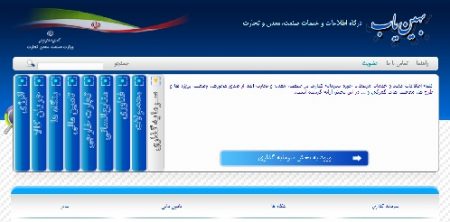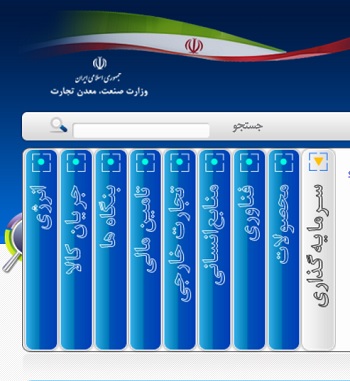 To answer a received question from a European PIMI Portal 0viewer, the PIMI Editorial team decided to explain about it for all. “What is “Behinyab” and its role? “Behinnyab” is the name of a website related to the “IMT” Ministry for proposed and predefined services to licensed industries.
To answer a received question from a European PIMI Portal 0viewer, the PIMI Editorial team decided to explain about it for all. “What is “Behinyab” and its role? “Behinnyab” is the name of a website related to the “IMT” Ministry for proposed and predefined services to licensed industries.
In 2009, when the supply of materials to converting industries (including polymers), companies and factories faced with several problems, Behinyab website created to offer diverse services to the licensed units also paving the way for those who are either new comers to the industry or the old ones working without licenses or work permissions. Though the missions of “Behinyab” included: Energy, Products’ Flow, Commercial Units (Entrepreneurs), Financial Aids (Supply), Foreign Trade, Human Resources, Technology, Products and Investment, but very soon at least for the polymers’ converting industries, it became a source of purchasing cheap materials from the “IME” (Iran Mercantile Exchange).
Legal converting industries in all areas advised to register at “Behinyab”, receive a unique code of authentication and buy materials (whatever it was) in official prices determined by relative committees. Soon after, the “behinyab” name and its codes started to be populated and most industries with legal documents relaxed for their good future. However, like other national and governmental decisions, it couldn’t remain intact and the illegal mobs started to influence to the system and acquire the codes from the created black markets, very normal for the economies which are in the hand of the governments (something like created mobs after reforms in former Soviet Union).
Since that time by shifting the polymer markets to IME and when the petchem units were forced to offer their productions at the IME, the polymer markets have been under the influence of the huge trade volumes by the wealthy individuals or companies that would have been able to raise their hands at every bid. Gossips say that most of the hands were in the pockets of the privatized petchem companies who were the exporting lovers. The IME days were named also “Behinyab Days” that were the dates for purchasing cheap materials with official prices from “IME”. It seems by considerable declining of Chinese imports of the Iranian polymers, the influence of the “Behinyab Codes” are also decreasing. Will this happen?
Now, day by day, the IMT Ministry is trying to reduce the role of “Behinyab” in material supply and its codes in material pricing. Would another creative system will replace “Behinyab” if the Chinese return back to the Iranian Polymer Markets? It is possible, but no one knows.












